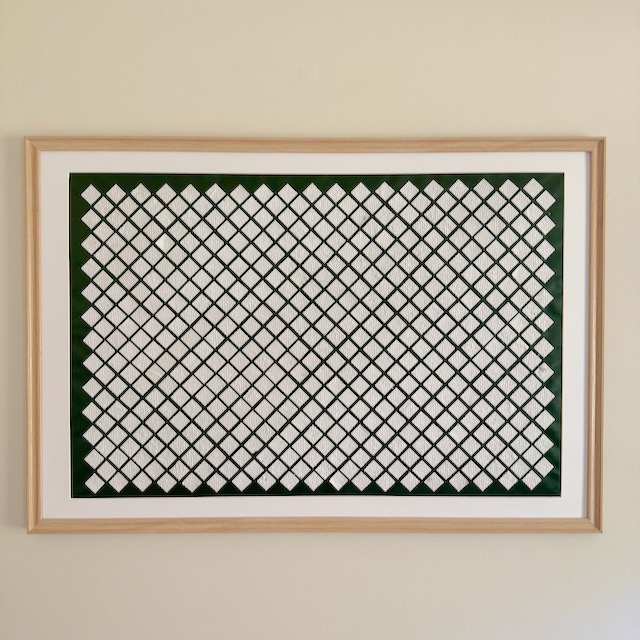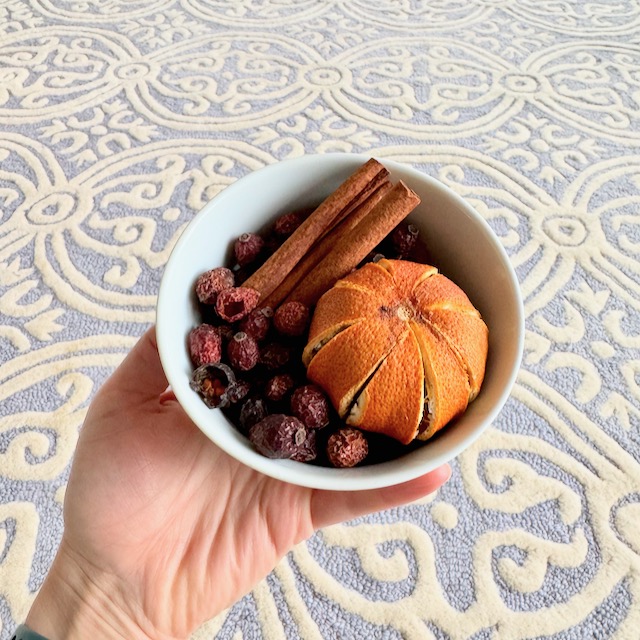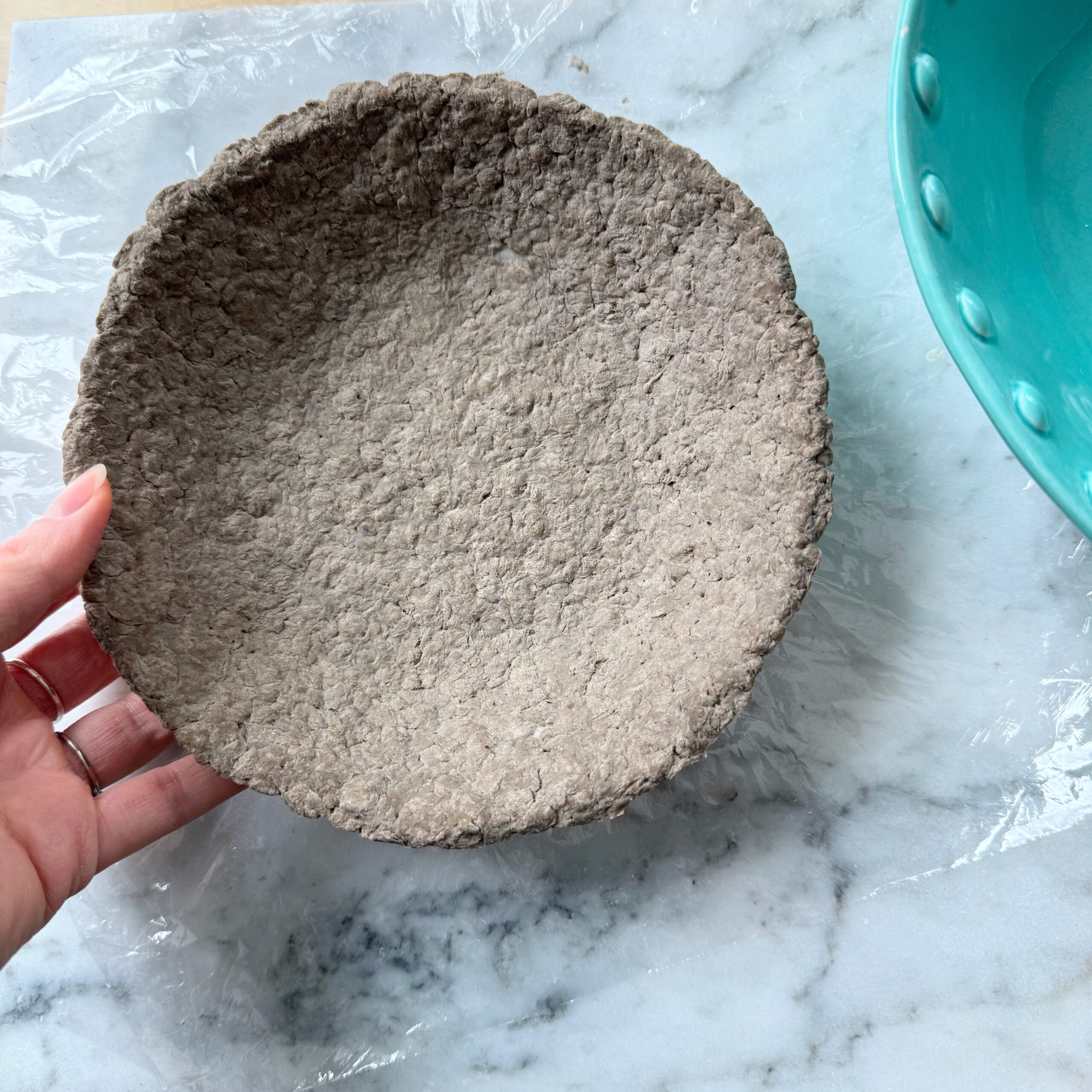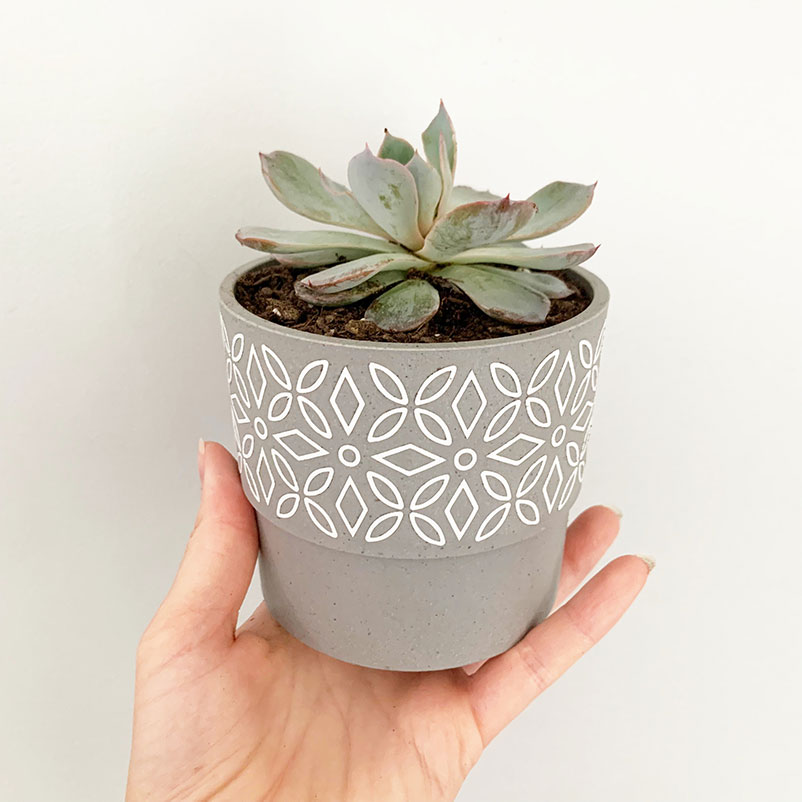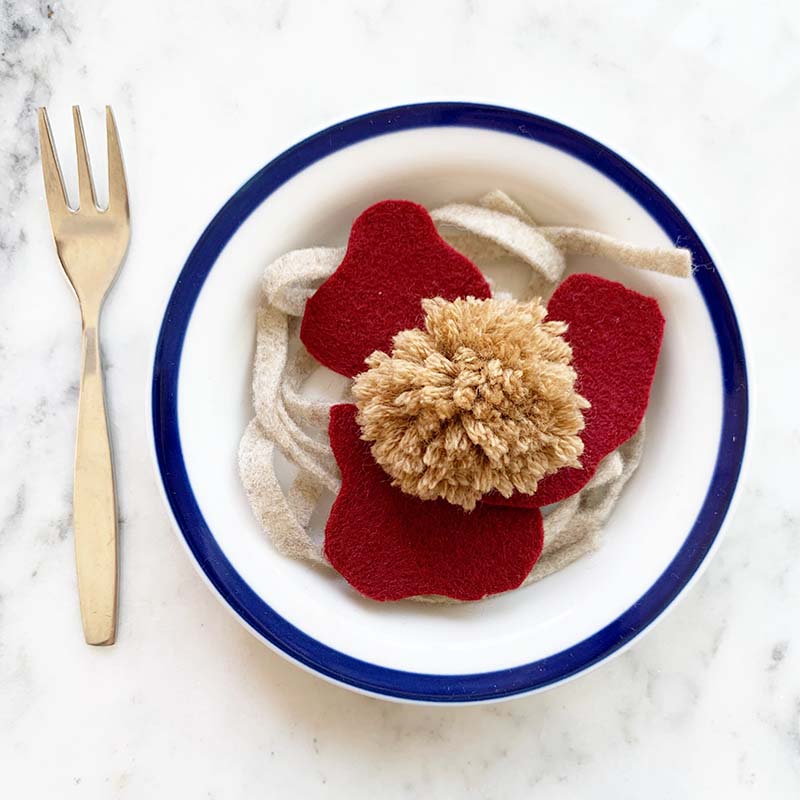Deer Proof Enclosed Garden
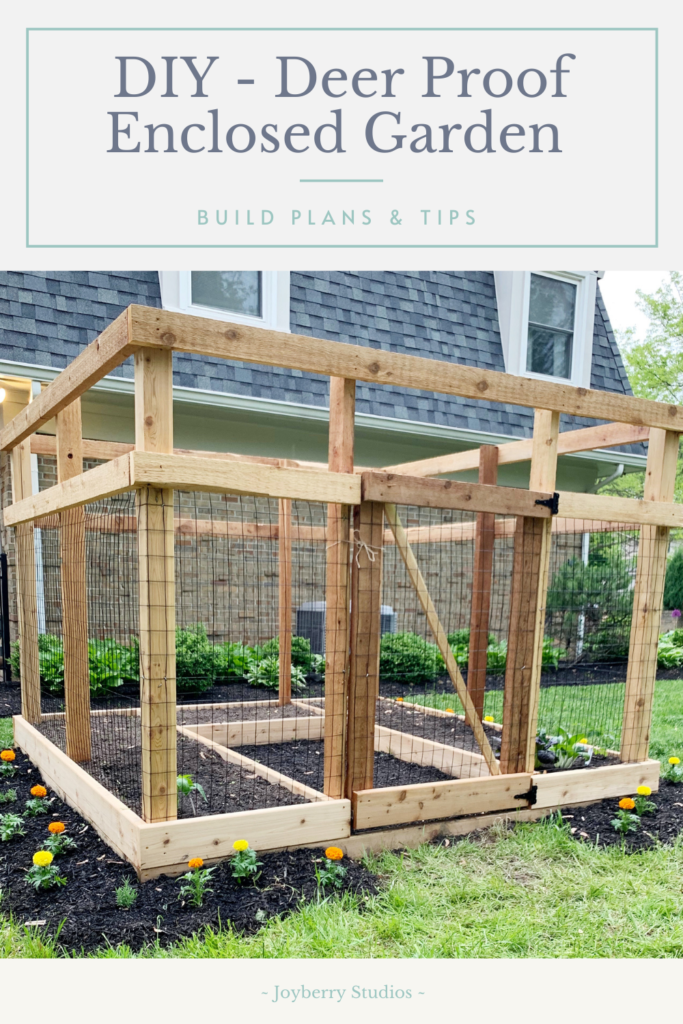
This deer proof enclosed garden is a great addition to our yard. It is sturdy, visually appealing, and keeps the deer out of our vegetables. Multiple neighbors have asked how we built it. Keep reading to find out how we deer proofed our vegetable garden.
Why we Need a Deer Proof Enclosed Garden

A few years ago my husband and I moved from Boston to Columbus. We bought a house that I only saw on the internet and our first morning in the house was magical. I woke up four months pregnant on a futon in the middle of our living room with just a throw blanket over me. I opened my eyes and saw a family of deer chomping on my neighbors beautiful hostas just a few feet outside of our windows.
Deer are such interesting animals. They are so big to live in such a suburban area. My daughter nearly chokes on her food when we see them outside of our kitchen window. She gets so excited and is absolutely in awe by such a big animal in her backyard.
The deer can eat our hostas, but if we are going to spend the time and energy to grow a vegetable garden they cannot chomp on our tomatoes. We needed to build a deer proof enclosed garden.
Researching Other Deer Proof Enclosed Gardens
I searched forever for a garden enclosure. There are a lot of kits online, like this one from Earth Easy. These kits are great if you like exactly what they offer and don’t want to make any adjustments to the build plans. They are also a bit pricey, so if cost is a factor for you, you may want to build your own too. I wanted to save money and truly ensure that we had a deer proof enclosed garden, so we built our own.
After three days of trying to come up with build plans, I never felt fully confident with what I made. Then I found this tutorial online from Home Depot that walks you through how to make the enclosed garden. The plan was almost exactly what I was trying to design on my own, so we went with this one!
In my freebies library there is a file with more detailed cut lists and written directions to help you if you want to build the same enclosed garden. It pairs well with the video! It is available to all my email subscribers in my freebies library. Simply sign up for my emails here to gain access!
Wood & Chemicals to Avoid

Just a heads up, the purchase list in the Home Depot video is incorrect. You will absolutely need more than three 2”x4”s. You may have to do some calculations if your wood is a different size than the ones listed. For example, we could only get 2x4s in 8ft length, so we had to look at the cut list and modify.
We purchased cedar for all of our lumber. Cedar is naturally resistant to rot and insects. Wood at the moment is super expensive and cedar is one of the more expensive woods. You can use another kind of wood BUT DO NOT USE PRESSURE TREATED WOOD. It is not recommended to grow food in raised beds with pressure treated wood. There are chemicals in it that are not food safe.
If you want to finish the wood you have to be careful and research the products you want to use. Stains, polys, and paint aren’t usually food safe and should not touch the dirt and plants. You could maybe finish the top half, just do your research and find out what you feel comfortable with. We did not finish the wood. At the end of the summer it aged into gray, which is typical for cedar.
Build

The build took about a day. I suggest using a level and really making sure that the garden looks square when it is placed in your yard. Our ground wasn’t level so we dug out a little trench for the garden to sit in. This also helped keep it sturdy since it doesn’t sit in the ground.
We didn’t feel like it needed the cross bracing. It feels really sturdy as it is and we liked the clean parallel lines.

We didn’t like the look of traditional chicken wire. If you want a more polished look you can use garden wire fencing. It’s a little more expensive, but I think it is worth it.
I also suggest waiting to make the cuts for the door until the end. A few measurements that are just a little off can really add up.
Dirt & Mulch
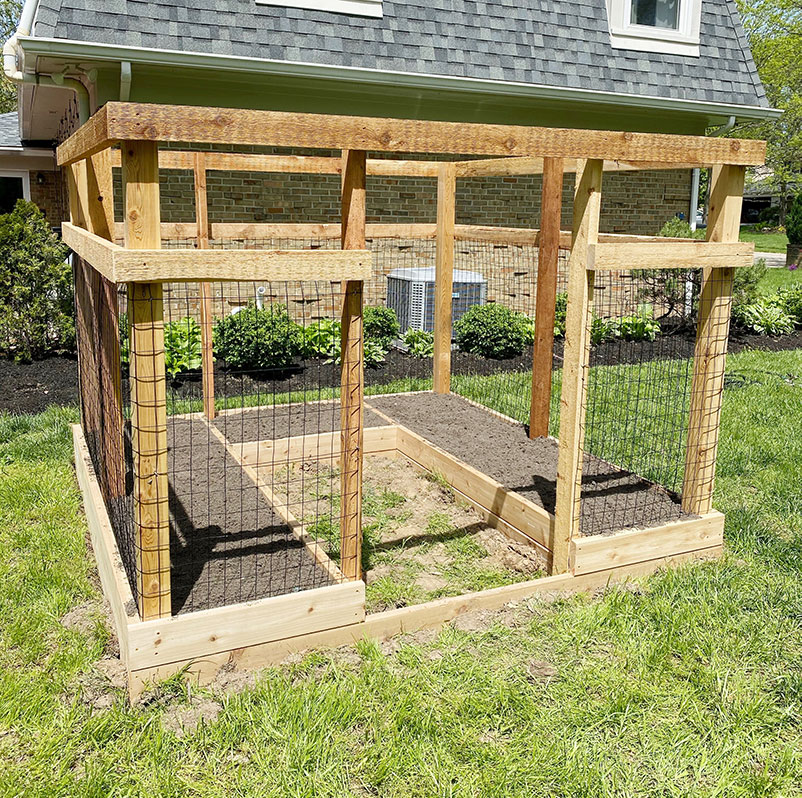
We ordered dirt and mulch from Kurtz Brothers Central Ohio. They were great to work with. We used around 2 cubic yards of dirt and maybe 1/2 a cubic yard of mulch for around the outside perimeter and the standing area inside the garden. (See photo further down for mulching.)
Filling your garden can be expensive if you are purchasing bags of dirt. To start, you should pick up all of the dirt in the beds and turn it upside down, so the grass roots are facing up. This ensures that the grass doesn’t grow into your raised beds. You can also fill it with old leaves, smaller sticks, untreated mulch, and dirt that you may have already.
You should also add compost to any bed before adding plants to ensure there is enough nutrients for the plants to thrive.
If you are building your garden in the fall, you can check out lasagna gardening.
Total Cost
All of the wood, screws, gardening wire, and door hardware cost us about $720, not including the delivery fee. The cubic yard of dirt and bit of mulch that we used was about $50, not including delivery. (We built this garden at the start of Covid, so wood prices will hopefully be a little lower for you.)
Delivery costs run about $80 for where I live. If you wanted to cut back on costs you could rent a truck for a day to get all of your building materials and dirt/mulch. With COVID, having a little one, and ordering more mulch and dirt for other parts of our yard this just wasn’t going to happen for us.
Square Foot Gardening
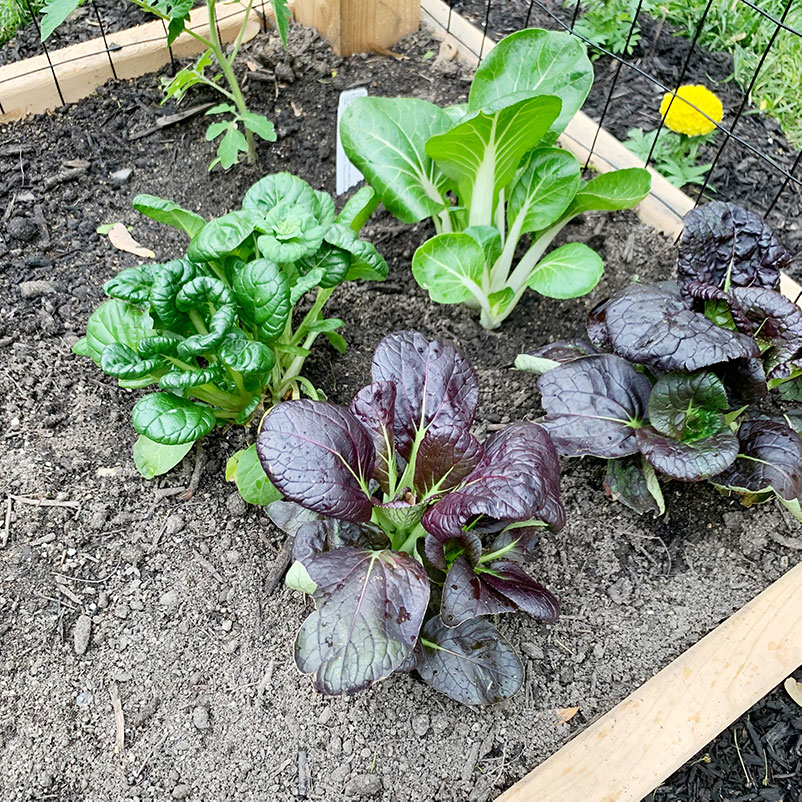
This was such a fun project and I am so excited for our garden. As far as gardens go though, it is a pretty small garden. In order to maximize our yield we are doing square foot gardening.
Square foot gardening is a method where you divide your garden into square feet and plant the maximum number of plants in each square foot. For example, you can fit one tomato plant in a square foot and 9-16 carrots per square foot. We are doing tall growing plants (tomatoes, peppers, beans) around the outside and shorter plants (carrots, beets, lettuce) around the inside. Trellising also works great in this garden.
When doing square foot gardening you also have to be careful about what plants you plant next to one another. Beets love kale. Onions don’t like beans. There are just a few things to keep in mind. This companion gardening article really helped me.
Flowers
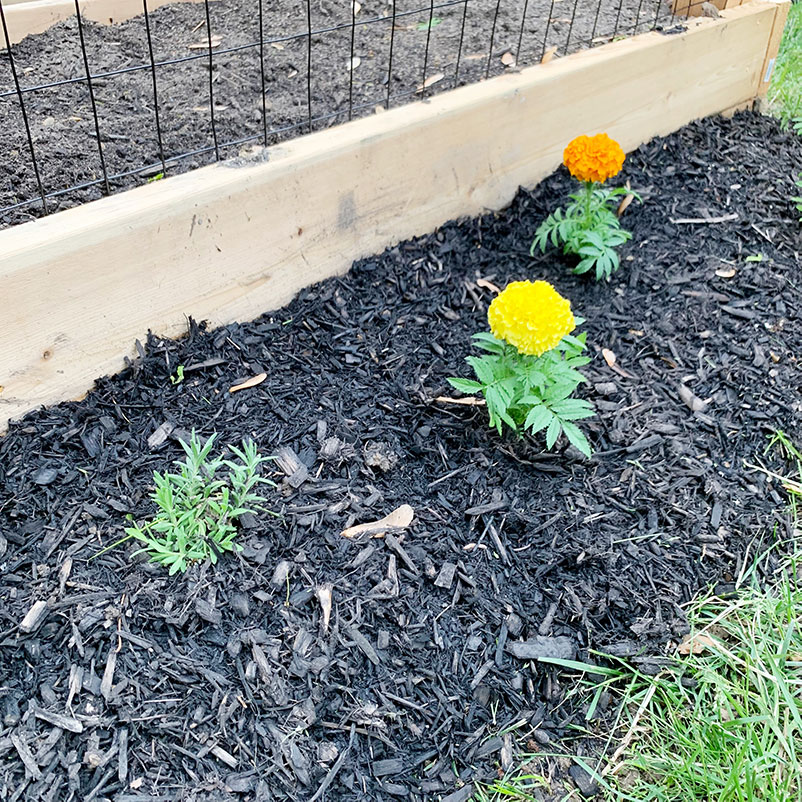
Humans aren’t the only ones who like to snack on delicious home grown vegetables. Animals and little insects also love them too. The fence around the outside will help deter bigger animals, but we wanted some extra protection as well.
Marigolds are a perfect addition around the outside of any garden. They are our sacrificial plant. Slugs, ladybugs, and other insects like marigolds and will go to the marigolds instead of your vegetables. Marigolds also secret a substance that helps keep your plants safe from root nematodes.
We also planted four lavender plants around the outside. Lavender is thought of as a protecting plant because the strong smell deters deer and rabbits. (If a deer is hungry enough it will eat nearly anything though.)
These flowers also attract pollinators, which is great for helping your garden grow!
End of Summer Update
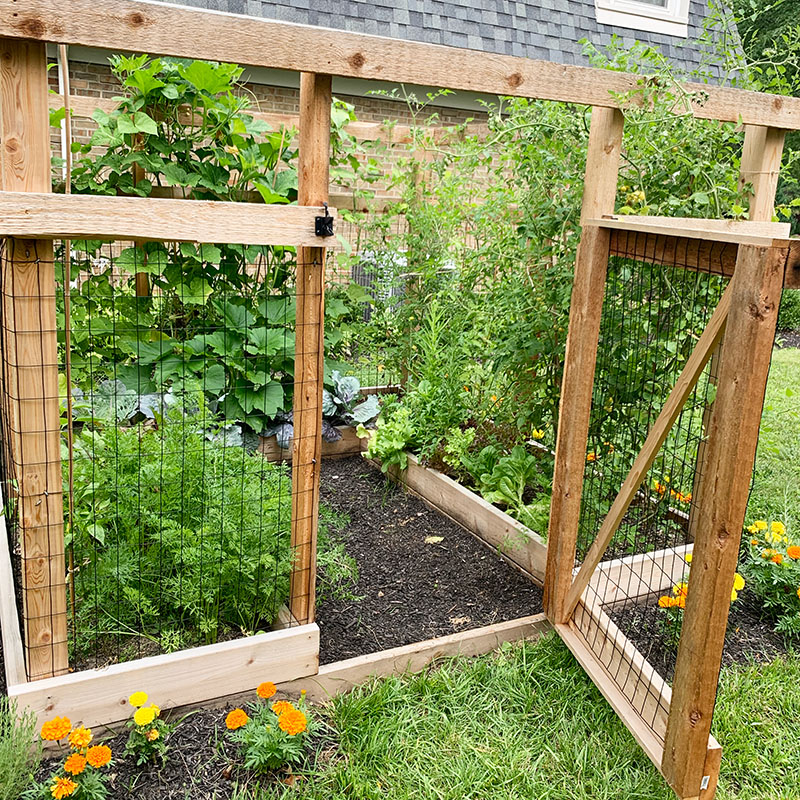
A little update! We absolutely loved our first summer with our garden and we learned a lot. For example, one squash plant can take over an entire side of the garden and that our enclosure won’t keep out squirrels that love pole bean seeds immediately after they are planted. We were thrilled with all that we could grow in such a small space and look forward to our next gardening season!
Share & Updates
If you have any more gardening tips, favorite vegetables to grow, or any questions please let me know! You can comment below, or reach out to me on Instagram. I will post updates about my garden in my stories!
